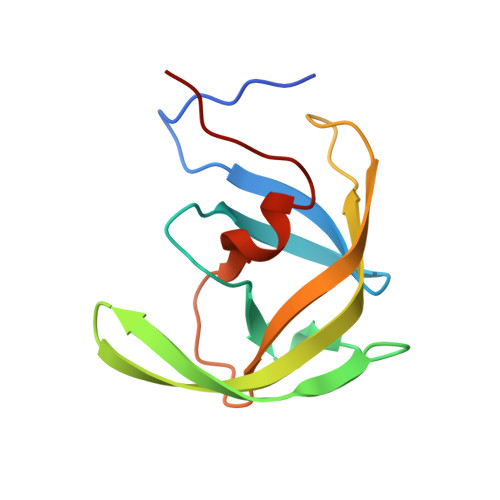Crystal structure of an FIV/HIV chimeric protease complexed with the broad-based inhibitor, TL-3.
Heaslet, H., Lin, Y.C., Tam, K., Torbett, B.E., Elder, J.H., Stout, C.D.(2007) Retrovirology 4: 1-1
- PubMed: 17212810
- DOI: https://doi.org/10.1186/1742-4690-4-1
- Primary Citation of Related Structures:
2HAH - PubMed Abstract:
We have obtained the 1.7 A crystal structure of FIV protease (PR) in which 12 critical residues around the active site have been substituted with the structurally equivalent residues of HIV PR (12X FIV PR). The chimeric PR was crystallized in complex with the broad-based inhibitor TL-3, which inhibits wild type FIV and HIV PRs, as well as 12X FIV PR and several drug-resistant HIV mutants 1234. Biochemical analyses have demonstrated that TL-3 inhibits these PRs in the order HIV PR > 12X FIV PR > FIV PR, with Ki values of 1.5 nM, 10 nM, and 41 nM, respectively 234. Comparison of the crystal structures of the TL-3 complexes of 12X FIV and wild-typeFIV PR revealed theformation of additinal van der Waals interactions between the enzyme inhibitor in the mutant PR. The 12X FIV PR retained the hydrogen bonding interactions between residues in the flap regions and active site involving the enzyme and the TL-3 inhibitor in comparison to both FIV PR and HIV PR. However, the flap regions of the 12X FIV PR more closely resemble those of HIV PR, having gained several stabilizing intra-flap interactions not present in wild type FIV PR. These findings offer a structural explanation for the observed inhibitor/substrate binding properties of the chimeric PR.
- Pfizer Global Research & Development, 2800 Plymouth Rd., Ann Arbor, MI 48105, USA. hheaslet@scripps.edu
Organizational Affiliation:

















